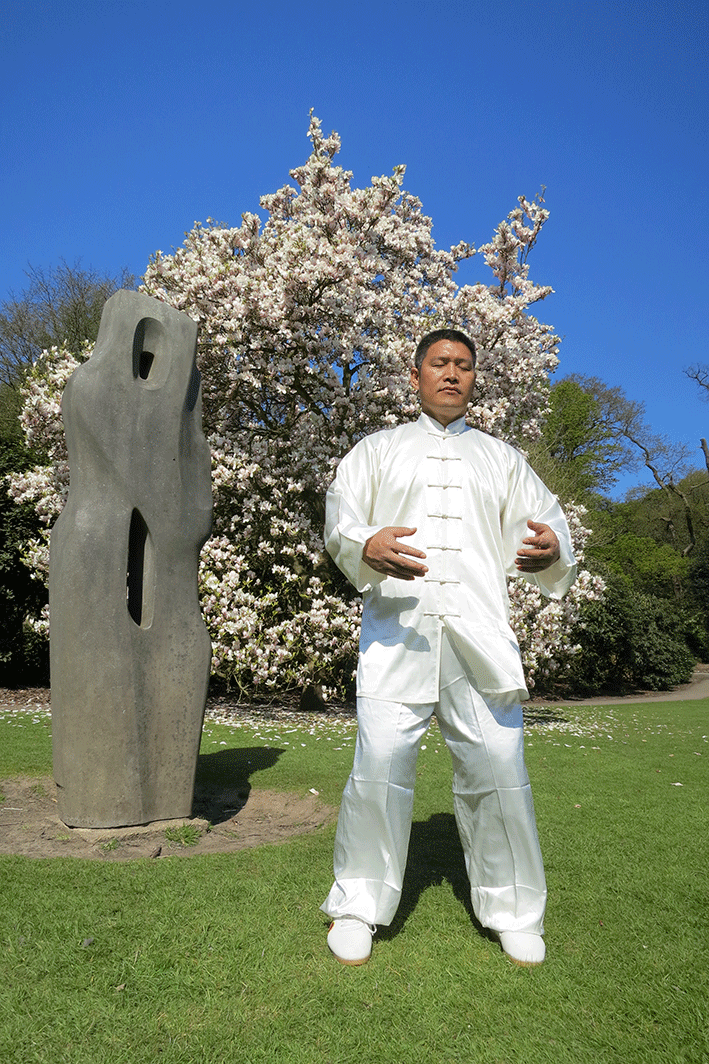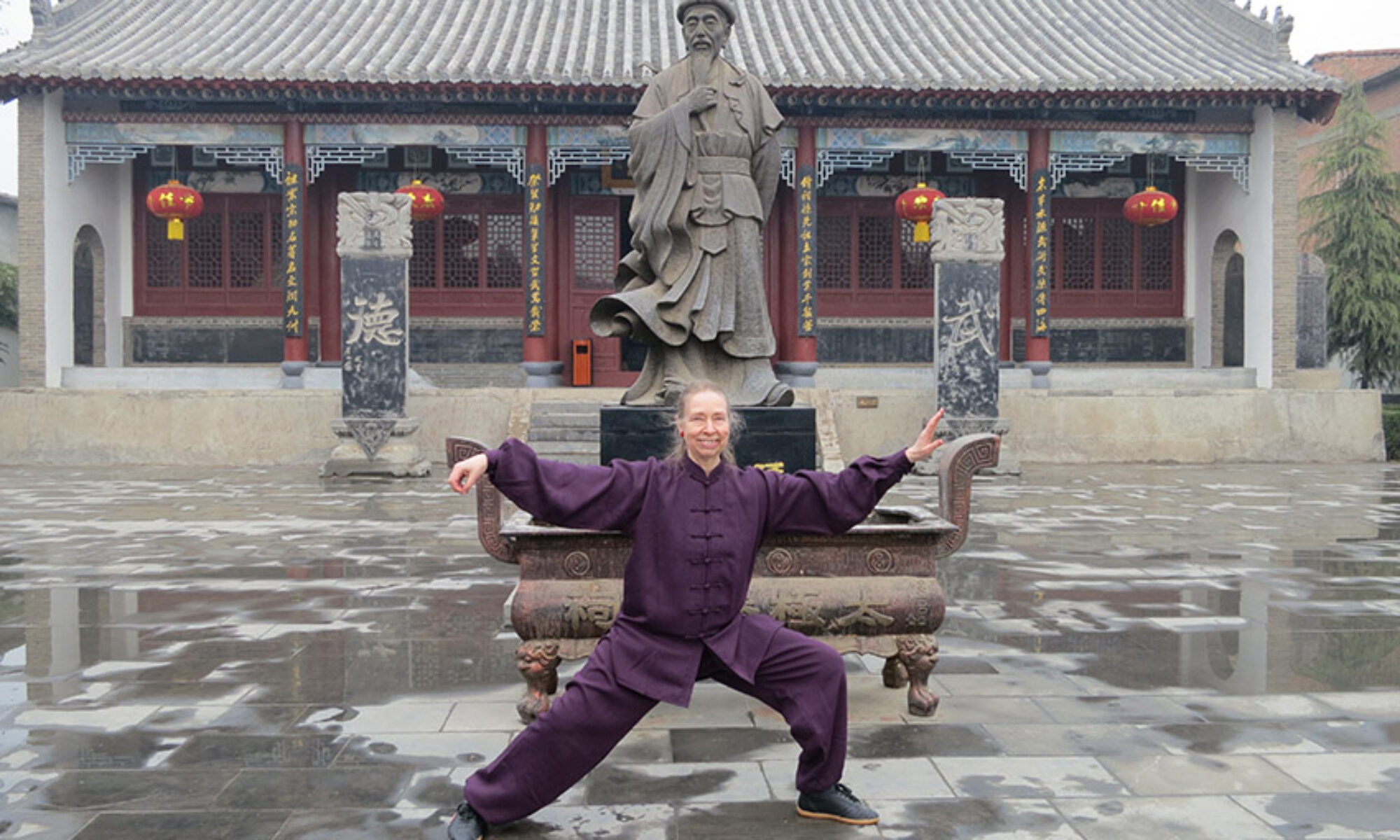Tai Chi practice is weight-bearing which helps to strengthen bones and regular training improves balance, muscle strength, gait, coordination and mobility. With a relaxed mind and body, the slow movements naturally help to quieten breathing, and make it more relaxed, deeper and slower.
• Instability is a key point as we age
• Tai chi practice should be done two to three times a week to be most effective
“…the physio at the hospital said the tai chi was helping me with my balance. So don’t want to miss it if possible” Tai Ji Circle student
Mind, body and breath integration
Tai chi practice aims to calm the mind through relaxation, with naturally slower breathing and the release of tension in muscles, joints and ligaments. The improvement in posture, balance and coordination help to increase confidence in movement and helps alleviate fear of a fall (mind/body coordination)
Better posture
Focus on alignment, head straight spine releasing down, chest and back relaxed, moving the body as one unit, this relaxes and strengthens the spinal muscles improving balance and helps correct poor posture that can affect breathing and the internal organs.
Controlled slow movement, improves mobility
When practicing tai chi the aim is to have slow, flowing smooth movements that coordinate naturally with the breath at a higher level, maintaining a good posture that slowly helps increase internal muscular strength to support the spine and increases power to the legs.
Gait
Awareness in stepping without committing the weight until the foot is placed firmly down, heel first moving forward, or toe first moving back, corrects movement of lower limb and helps to improve balance and lengthen stride
“Story in today’s Telegraph says medical research has proved that people with Parkinson’s Disease do better maintaining stability and longer strides when walking with one hour a week doing Tai Chi.” Tai Ji Circle student
Relaxed knees
Tai chi is practiced with relaxed knees that allow the release of the spine and lowers the centre of gravity which loads body weight onto upper thigh muscles and through legs to feet, this brings more awareness to the legs and strengthens them which helps stability
Improved circulation
In terms of Chinese medicine theory, the rotational, circular, spiralling movements in the body (and also of energy), help release the blocks and tensions in the meridians that cause pain, allowing the energy and fluids in the body to circulate more freely and release the blockages
Weight Changing
In tai chi exercises and forms, the weight changes with each movement. As well as expressing the yin yang aspects of the practice, this change of weight with control increases stability and strengthens the whole lower body. Muscles are strengthened and tendons and ligaments balanced
“I was hoping the practices would benefit the problem I have with my back which makes standing painful. At first I could only stand for the first 10 minutes of each class. I persevered, gradually increasing the time I was able to stand. To my amazement in a Tai Ji Circle workshop less than two months’ later, I stood (and was pain-free) for two hours. Not only is my pain alleviated but the practice of Tai Ji and Qigong clears my head and leaves me feeling generally better and more alive.” Tai Ji Circle student

Standing practice meditation
Chen taijiquan has a standing practice, with feet hip width and parallel, slightly ‘sitting’, with soft relaxed knees and hip joints to allow the spine to release and extend and the arms raised to waist level, in a circle facing palms in towards the body. The upper body can release tension and energy can sink downwards through the pelvis and legs. Provided the posture is properly aligned and weight evenly balanced across the feet, this practice increases our strength and teaches us inner awareness and mindful concentration, we allow the mind to stay calm and relaxed (as in meditation), whilst also finding our inner core or centre. It is the ‘preparation’ practice before tai chi movement begins.
This static standing practice for long periods of time may not suit people with low-blood pressure or those with problems of balance, but it can also be practiced seated in a chair as well.
Out of the stillness begins the movement of tai chi
Dr Mosely expounding health benefits on the BBC: https://www.bbc.co.uk/programmes/articles/18gmYMx2ntW6Sdyl3fTH0Gw/the-surprising-health-benefits-of-tai-chi
Useful reference source links:
https://www.networks.nhs.uk/nhs-networks/tai-chi-chi-kung-for-rehabilitation/tai-chi-for-falls-prevention (Mark Peters)
http://www.cdc.gov/HomeandRecreationalSafety/Falls/compendium/pdf/Voukelatos.pdf
http://www.ncoa.org/improve-health/center-for-healthy-aging/tai-chi-moving-for-better.html
http://www.ageuk.org.uk/Documents/EN-GB/For-professionals/Research/Falls_Prevention_Guide_2013.pdf?dtrk=true
Trial for Tai Chi for pain relief in fibromyalgia: http://www.ncbi.nlm.nih.gov/pubmed/20818876
